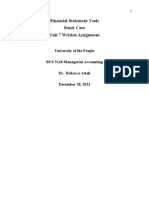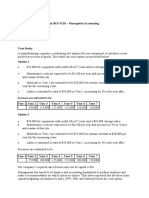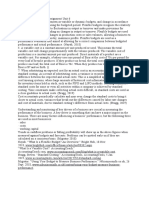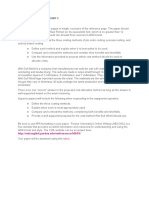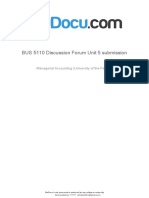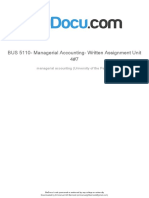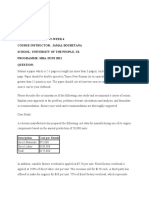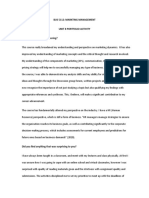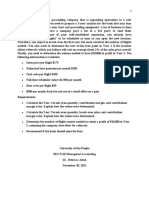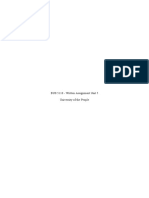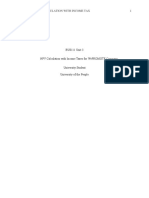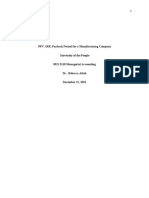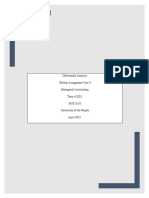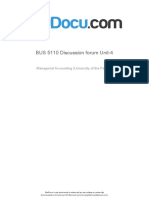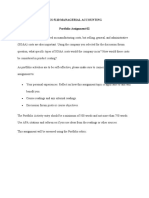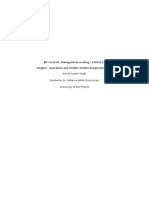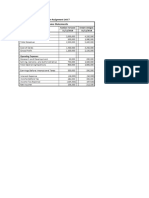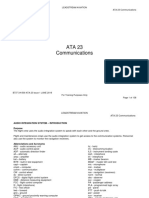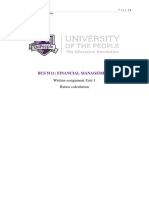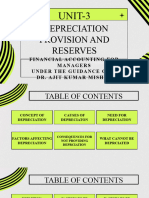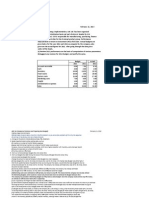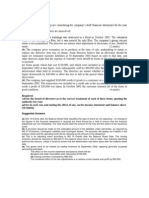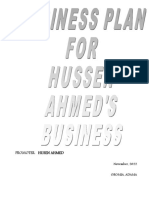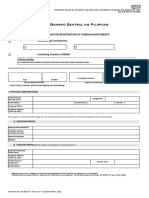100% found this document useful (1 vote)
824 views7 pagesBUS 5110 Assignment Unit 7
This document evaluates two companies, Fashion Forward and Dream Designs, for potential acquisition. Various financial metrics are analyzed, including profit margin, return on assets, current ratio, quick ratio, accounts receivable turnover, average collection period, inventory turnover, and average sales period. For most metrics, Dream Designs performs better with higher profit margin, quicker accounts receivable collection, higher inventory turnover, and stronger overall sales. Therefore, the document concludes Dream Designs would be the better potential acquisition target.
Uploaded by
Charles IrikefeCopyright
© © All Rights Reserved
We take content rights seriously. If you suspect this is your content, claim it here.
Available Formats
Download as DOCX, PDF, TXT or read online on Scribd
100% found this document useful (1 vote)
824 views7 pagesBUS 5110 Assignment Unit 7
This document evaluates two companies, Fashion Forward and Dream Designs, for potential acquisition. Various financial metrics are analyzed, including profit margin, return on assets, current ratio, quick ratio, accounts receivable turnover, average collection period, inventory turnover, and average sales period. For most metrics, Dream Designs performs better with higher profit margin, quicker accounts receivable collection, higher inventory turnover, and stronger overall sales. Therefore, the document concludes Dream Designs would be the better potential acquisition target.
Uploaded by
Charles IrikefeCopyright
© © All Rights Reserved
We take content rights seriously. If you suspect this is your content, claim it here.
Available Formats
Download as DOCX, PDF, TXT or read online on Scribd
/ 7

